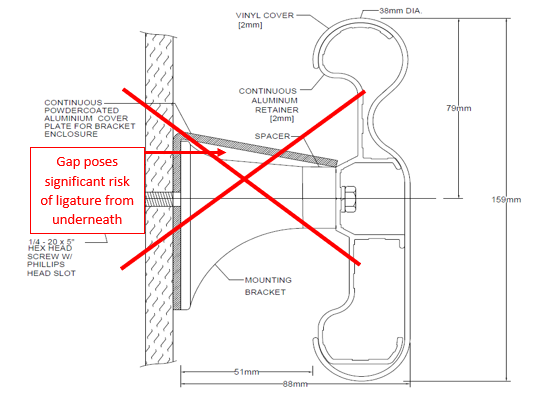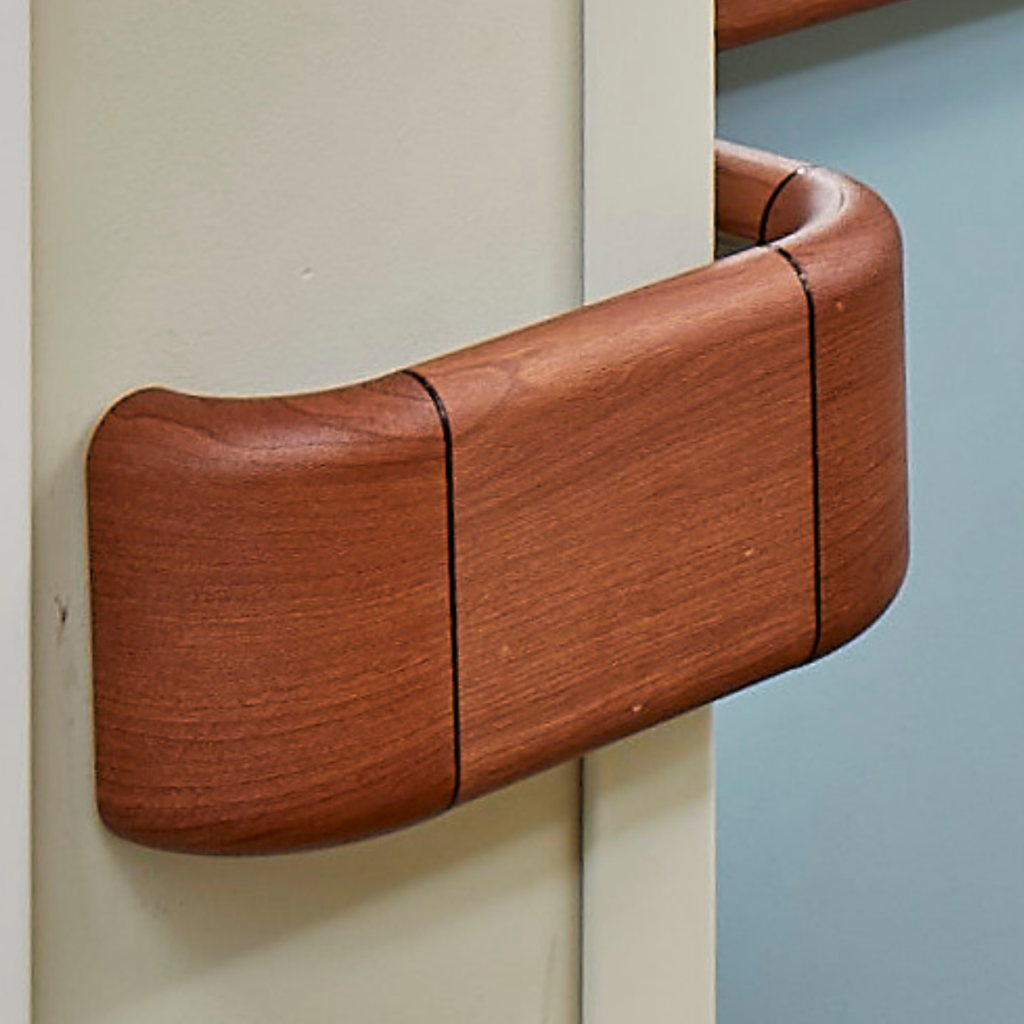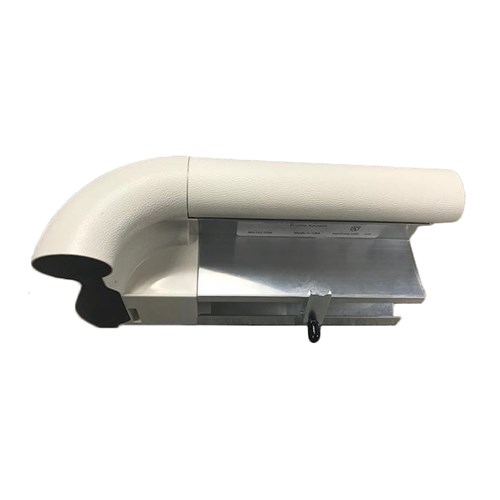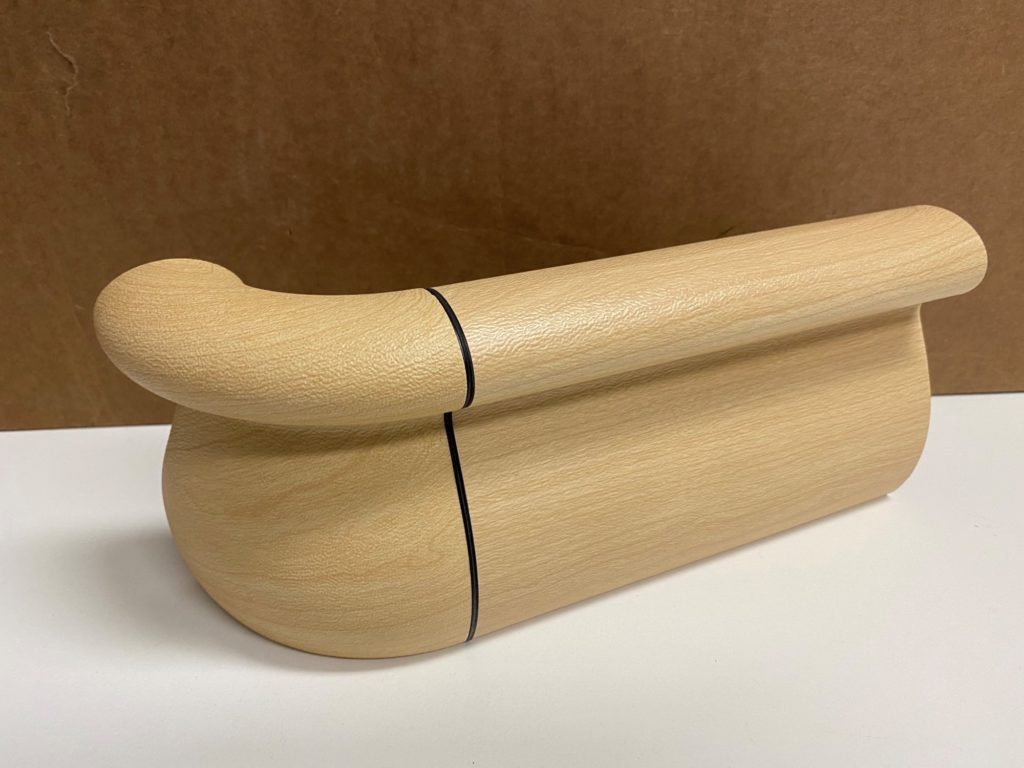
What to Look for in an Anti-Ligature Handrail
What is an anti-ligature handrail?
Anti-ligature handrails, also known as ligature-resistant handrails are a group of handrail systems that are designed to minimise the risk of strangulation of mentally vulnerable people. It is a stark and unpleasant topic, but a very important topic and one that deserves to be heavily regulated and scrutinised to ensure the maximum safety of the mentally vulnerable.
Now the burning question?
Are handrails for mental health heavily regulated or scrutinised in Australia?
The answer is sadly ‘No.’ Over the past decade, Acculine has researched BCA standards for levels of compliance to regulate design and conduct related to handrails and currently there is no specific design standards like in other countries. Instead we have had to get our products tested in other reputable countries such as USA and UK, as well as consult with industry experts on potential ‘loopholes’ and common errors to guard against.
What to avoid?

Handrails with any holes or gaps along the continuous mounting rail
This is the #1 rule for an obvious reason. Any gap in a handrail can become a ligature point. If the gap enables a person to loop something through, even down to 1-2mm, it can pose a ligature risk. Even a hole that does go right through can pose a risk if a person can hang a hook from it.

Alternative systems using a coverplate over standard mounting brackets
BE AWARE: Some suppliers profess to be experts in supplying anti-ligature (or ligature resistant) handrails, however only provide a continuous plate to cover the mounting brackets fixing the handrail to the wall. This means that the mounting brackets are still accessible from underneath posing a risk to behavioural health patients. As mentioned above, any gap in the handrail is an absolute no-go for anti-ligature handrails.

Handrails without returns to the ends
Handrails without returns are used widely in mental health facilities around Australia; particularly more traditional timber products that don’t come standard with returns. A curved return ensures that any liguature device looped along the length of the handrail will slip off. Without curved returns, the entire length becomes a ligature hazard. The very ends of the handrail, where the handrail steps down to the continous mount, also pose a risk, if something can be hung from its end without slipping off easily.

Pointed returns
Similar to the above point, any pointy section of the handrail has potential to be a ligature point as it hinders a ligature device from easily sliding off.

Continuous (around external corners of walls) handrails
This is a common mistake seen in Mental Health facilities. It is not generally the fault of the supplier, although it does get widely specified and installed this way on site. Where a handrail continues around a corner without terminating at the end of the wall, this can potentially increase the risk of a ligature point, even with continuous mounting brackets and curved returns, so should be avoided where possible.
What to look for?

Continuous rail with no ligature points
If a liguature point is going to be present on the continuous mounting bracket rail, it is generally always at the end of the handrail where it returns to the wall. To avoid any risk, request product samples from your handrail supplier prior to specifying, to ensure that no holes or gaps are present.
Generally with anti-ligature products, the more simple it is, the better it is. If the system you are using is an assembly of multiple pieces, it may pose a risk for a number of reasons
A: Multiple pieces increases the number of pieces/joints/junctions/gaps that could pose a ligature hazard
B: Multiple pieces increases the chance of disassembly
C: If the system is overally complex to install, it is likely that crucial parts are left off the installation, further increasing the ligature risk

Smooth curved returns
This is standard with most rigid vinyl and PVCu handrails. Rather than opt for timber handrail without returns, try and achieve the same look with a timberlook finish.

Handrails with ‘start & stop’ returns
Specify and draw on the plans, showing the handrails starting and stopping at the wall corners rather than continuing around the corners.
